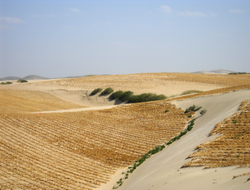Holy Tal'Akdar
State of Holy Tal'Akdar | |
|---|---|
|
Flag | |
| Capital and largest world | Tal'Akdar, Tsryn-Dal |
| Official languages | Tal'Akdari |
| Ethnic groups | 90.13% Tal'Akdari 4.51% Nintan 2.04% Ungar 1.97% Tasreen 1.30% Sansu 0.05% Tai Shar. |
| Religion | Tintanar |
| Demonym(s) | Tal'Akdari |
| Government | absolute martial theocracy |
| Saryr II | |
| Taryn Akdar-Turim Bestanar | |
| Grekar Camala Razhad | |
| Legislature | Council of The Righteous |
| Unification under the Tal-Turim | |
| -300 PA | |
| -240 PA | |
| -130 PA | |
• Ascension to the Assembly | 41 PA |
| Population | |
• 84 PA census | 87,565,980,937 |
| Date format | yyyy/mm/dd (PJM) |
The State of Holy Tal'Akdar (Tal'Akdari: ![]() ; tr. Dōs Tsār Tal'Akdār), also known as Tal'Akdar, is an absolute martial theocracy located in the galactic east of Núlne. Tal'Akdar is one of the largest states, spanning 22 solar systems and has a total population of 87.65 billion. Tal'Akdar in the Tsryn-Dal System acts as capital.
; tr. Dōs Tsār Tal'Akdār), also known as Tal'Akdar, is an absolute martial theocracy located in the galactic east of Núlne. Tal'Akdar is one of the largest states, spanning 22 solar systems and has a total population of 87.65 billion. Tal'Akdar in the Tsryn-Dal System acts as capital.
The modern Tal'Akdari state was formed in -300 PA with the discovery of a colossal crashed alien vessel in the Sandazan Depression on Tal'Akdar, by a group of archeologists contracted by the Tal'Akdari religious authorities to search for religious artifacts. The crashed vessel was found to be in good enough condition for rapid reverse-engineering, which the Tal'Akdari religious authorities used to secure global unification under a theocratic regime.
In wake of global unification and the reverse engineering of the crashed vessel, the Tal'Akdari experience a dramatic advancement in technology, culture, sociology and the economy. Within a decade of the Joyous Miracle, the chronic shortages of food, declining resources and over-population were solved either through domestic technological innovations or through the successful colonisation of Tal'Akdar's two moons of Sar and Akdar-Turim. By -250 PA, the Tal'Akdari had expanded across the entire solar system, which resulted in the discovery of the Windway. In -200 PA, the Tal'Akdari tested their first successful faster-than-light drive utilising the wind way phenomenon, in what is considered to be the climax of the Resplendent Ascendance period.
From -200 PA until the ascendance of the Tal'Akdari state into the Interstellar Assembly, the Tal'Akdari would rapidly expand beyond their home-system, launching multiple colonisation efforts of neighbouring systems, as well as using force to conquer or absorb primitive species, sparking the Age of Blessed Prosperity. However, this period also saw instances of instability, civil strife and colonial agitations. In 39 PA, the Tal'Akdari made first contact with the XX, an Assembly-member race, within two-years the Holy State had become a fully-fledged member of the Interstellar Assembly, unleashing a new wave of trade, cultural opening and diplomacy.
As a near-totalitarian absolute theocracy, Tal'Akdar has an often troubled relationship with the Assembly, though in recent decades its involvement has rapidly grown, parallel to its economy, military strength and technological advancement.
History
Pre-history
Ancient
Classical
High-classical
Early Modern
High Modern
According to Tal'Akdari historiography, the High-Modern period began with the advent of the industrial revolution in the state of Calamdyr in -524 PA. Over the next few decades, industrialisation would spread rapidly across the southern hemisphere of Tal'Akdar. The resulting innovations in technology, medicine, food production and transportation resulted in a population boom that would last up until -321 PA.
The discovery of fossil fuels in -434 dramatically enhanced the level of technological advancement and economic change. Across much of Tal'Akdar, entire societies were transitioning from feudal agrarianism toward capitalistic industrialism, leading to the rise of science and the nascent but steady decline in the power of religion. This discovery of valuable fossil fuels propelled expansionism and colonialism, with Calamdyr and Gereydah utilising their access to the Great Water ocean to spread across continents, while Rezedar, using its immense population, expanded dramatically between -411 PA and -388 PA to dominate the northern hemisphere.
By -365 PA, tensions between the major powers over resources and territory erupted into the trilateral war known as the War of the Three Emperors, the war would see extensive devastation on a global scale, including the use of atomic weapons by Calamdyr against Rezedar. Ultimately, Calamdyr would emerge victorious and become the global superpower. The conflict left over 80 million dead and millions more displaced.
Following reconstruction, Tal'Akdar experienced a lengthy period of peace, stability and prosperity. Technological innovations brought about by the war continued steadily, however, the level of industrialisation, the mass consumption of resources and the post-war population boom laid the foundations of the period known as the Arduous Trial. Between -355 PA and -330 PA, Tal'Akdar's population exploded from 3.4 billion to 8.91 billion.
In -329 PA, a series of political uprisings and revolutions across the southern hemisphere, saw the domination of Calamdyr collapse and the emergence of a multi-polar world. These events would prove devastating in the years to come as renewed global tensions, exacerbated by the effects of the Arduous Trial, only weakened global cooperation in confronting the global crisis to come.
Arduous Trial
The Arduous Trial (-329 to -300 PA) refers to the period of extreme climate change, social and moral decay, economic collapse and water wars that emerged as a result of decades of over-population, dwindling resources and climate change brought about by uncontrolled carbon emissions.
Despite the initial problems of the Arduous Trial emerging in the immediate post-war period, the pace of environmental and bio-diversity decline hastened as the planet consumed greater resources in wake of the war. The period officially began in -329 PA, with the complete disappearance of Lake Dagaren, which provided water for over 300 million people, scientists noted that the lake was drying out and lobbied for restrictions on exploitation. Concerns were dismissed by governments due to the lake’s seasonal-based reductions, however, the summer of -329 PA, saw the lake dry out completely and to this day has yet to return.
The Lake Dagaren crisis caused severe economic and health issues for its basin regions, with the nation of Golomdyr instituting water rationing in -328 PA. Tal’Akdari scientists then warned at a major conference, if global changes were not instituted, the worsening climate would effect all nations and by -310 PA, become irreversible.
In -327 PA, it was widely accepted that the planet had reached peak fossil fuel production and output rapidly began to collapse soon after, sparking economic crises across the planet. While some states had succeeded in reducing fossil fuels through the use of hydroelectricity, the collapse of aquifers due to over-exploitation limited the industry’s capacity.
In -326 PA, the northern hemisphere was struck by the Saran-Jadir (Long Night), with the emergence of a colossal sandstorm, worsened by the erosion of top-soil in the concentrated agricultural regions. The planet’s natural arid nature provided the storm with sufficient particulates and dust, but top-soil erosion and rampant desertification exacerbated the storm’s durability. The storm covered the over 40% of the northern hemisphere for 29 months, devastating agriculture and power grids. The storm directly killed an estimated 4.6 million people, while its lasting effects on agriculture is believed to have killed 22.98 million through starvation and social unrest.
Between -326 PA and -310 PA, numerous sandstorms would break out across both hemispheres, while water sources were vanishing at a growing rate. In -319 PA, the state of Hazaridah, dammed the Gol-Dalanyr river, sparking the Gol-Dalanyr War, between it and the states of Shoraydah and Fereena, the war would escalate into the use of chemical weapons. Peace was negotiated by Calamdyr, with the river re-opened, though the deaths of 29 million people further deepened the growing global malaise.
Further resource and water wars would erupt from -315 onward, while the major powers of Calamdyr, Gareyn and Shuraydar suffered devastating economic declines, alongside social decay and moral decay. Records from the time describe many Calamdyrian cities becoming "cesspools of criminality, debauchery and nihilism." From -312 PA, climate refugees grew exponentially with over 2.64 billion fleeing the encroaching deserts, the chaos and instability led to the Great Awakening, a religious revival and the global domination of the Tintanar faith. The Tal'Turim, the governing church of Tintanar soon described the planet's decline as "heavenly justice for the sin engulfing the world."


